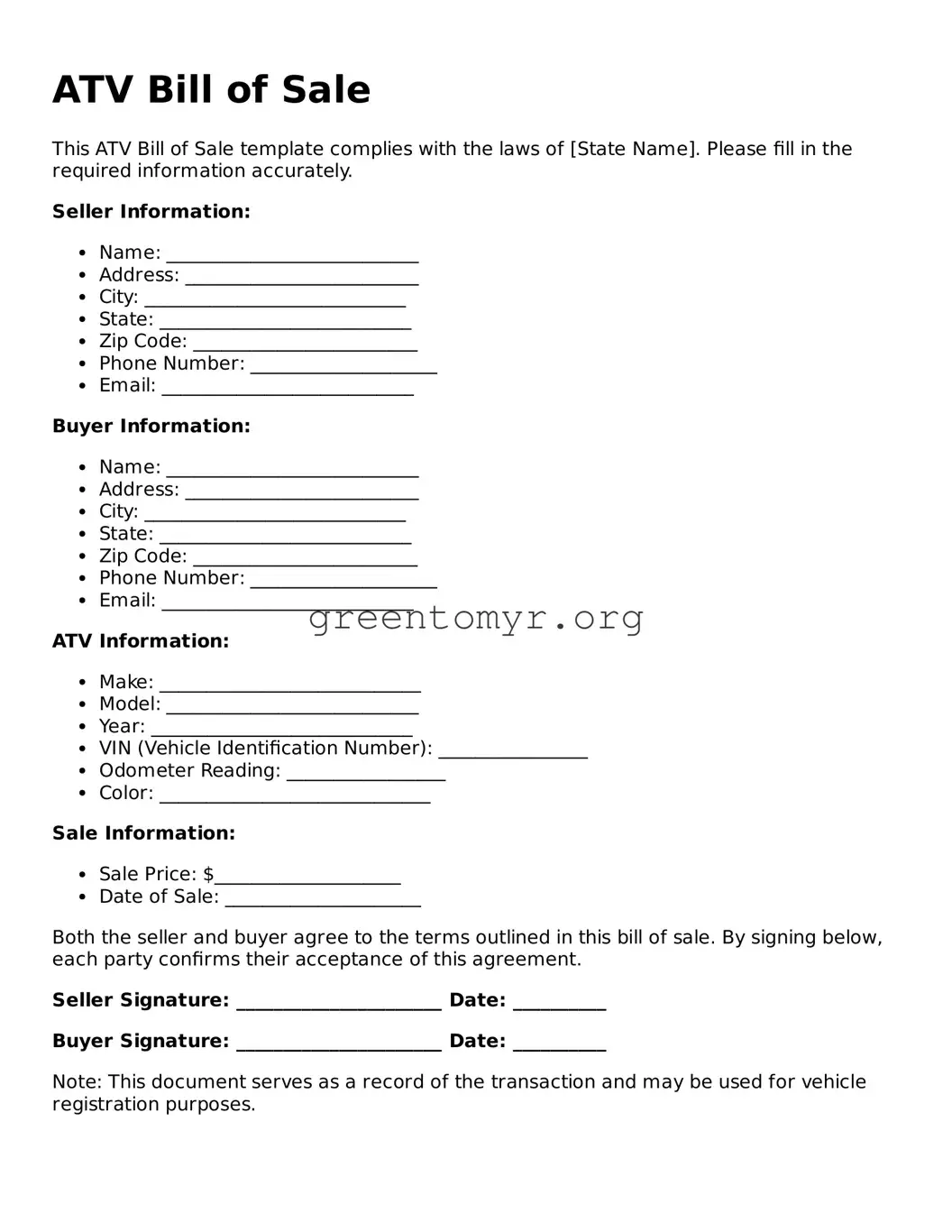What is an ATV Bill of Sale?
An ATV Bill of Sale is a legal document that serves as a record of the transfer of ownership of an all-terrain vehicle (ATV) from one party to another. This document typically includes important details such as the names and addresses of both the buyer and seller, a description of the ATV, and the purchase price.
Why do I need an ATV Bill of Sale?
This document is essential for several reasons. It provides proof of ownership, which is necessary for registration purposes. It can also protect both the buyer and seller in case of disputes regarding the transaction. Additionally, some states require a bill of sale for transferring ownership of an ATV.
What should be included in the ATV Bill of Sale?
A complete ATV Bill of Sale should contain the following information:
-
The date of the sale.
-
The full names and addresses of the buyer and seller.
-
A description of the ATV, including make, model, year, VIN (Vehicle Identification Number), and condition.
-
The sale price.
-
Signatures of both the buyer and seller.
Do I need to notarize the ATV Bill of Sale?
Notarization requirements vary by state. Some states require a notarized bill of sale to officially transfer ownership, while others do not. It is advisable to check your state’s regulations regarding notarization for ATV transactions to ensure compliance.
Yes, you can use a general Bill of Sale form, provided it includes all the necessary details related to the ATV and the transaction. However, it is preferable to use a specific ATV Bill of Sale form to ensure all relevant aspects of the sale are clearly addressed.
How do I fill out the ATV Bill of Sale?
To fill out the ATV Bill of Sale, follow these steps:
-
Enter the date of the transaction.
-
Fill in the names and addresses of the buyer and seller.
-
Describe the ATV in detail, including its VIN and condition.
-
Specify the sale price.
-
Have both parties sign the document.
What if there are problems after the sale?
If issues arise after the sale, having a properly completed Bill of Sale helps protect your interests. It can serve as evidence of the sale terms and conditions. Buyers should verify the condition of the ATV before completing the purchase, while sellers should disclose any known issues to avoid potential disputes.
You can find ATV Bill of Sale forms online, at local DMV offices, or through stationery stores that carry legal documents and forms. Many states also offer downloadable options through their official websites, which can ensure you have the correct format for your location.
